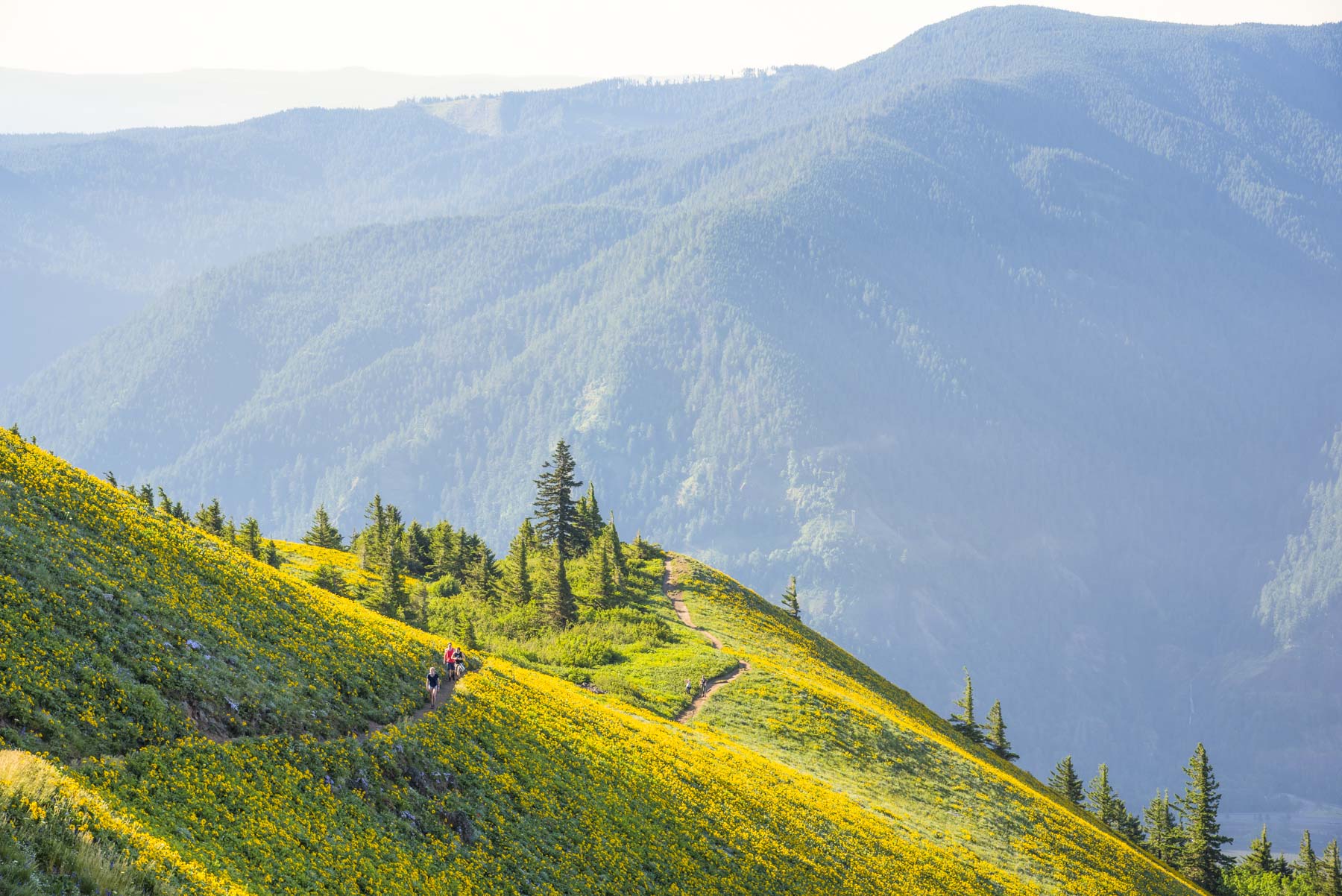
Looking for the best wildflower hikes in the Columbia Gorge? You’ve come to the right place. I’m a lifelong Oregonian that has spent my fair share of time hiking the Columbia Gorge in the spring.
I mean, how many of us Pacific Northwest locals can relate to the euphoric feeling of seeing the first blooms of spring unfurl in spectacular succession? These blushing blooms serve as a formal invitation in welcoming the long-awaited spring (and the glorious sunshine that comes with it!).
Spring clean those winter blues and make time to play outside! What better playground than the seemingly endless offerings of wildflower hiking trails in the Columbia River Gorge?
There’s so many incredible Columbia Gorge wildflower hikes. The challenge is knowing where to start and that’s where I come in. Longtime readers of this website know I’m not one for small talk, so let’s jump right in!
Local’s Tip: You may want to consider picking up this handy little thing before heading out to the Gorge. It’ll make your hiking experience that much more enjoyable. And who knows, you may even impress your hiking buddies (but no guarantees).
Best Time to Hikes the Columbia River Gorge for Wildflowers
It’s no secret among local (and out of town visitors) that the Columbia River Gorge is a must-see destination in Oregon. Known for a staggering concentration of waterfalls that cascade through lush temperate forests and the ample access to hundreds of miles of hiking trails.
Hiking the Columbia Gorge is always a good time, but one of the best seasons to visit is the spring. Between late March through June, the various wildflowers at the Columbia Gorge hit peak bloom. In doing so, they put on a dazzling display of colors, making a drive out to the Gorge nothing short of a necessity.
If you live nearby, I’d suggest visiting a these Columbia Gorge wildflower trails more than once to see which flower species crop up as the season progresses. I swear, that landscape is always changing.
Best Wildflower Hikes in the Columbia Gorge
You May Also Enjoy Reading: All 12 Gorge Breweries (Ranked) & 18 Relaxing Hood River Wineries Worth Enjoying
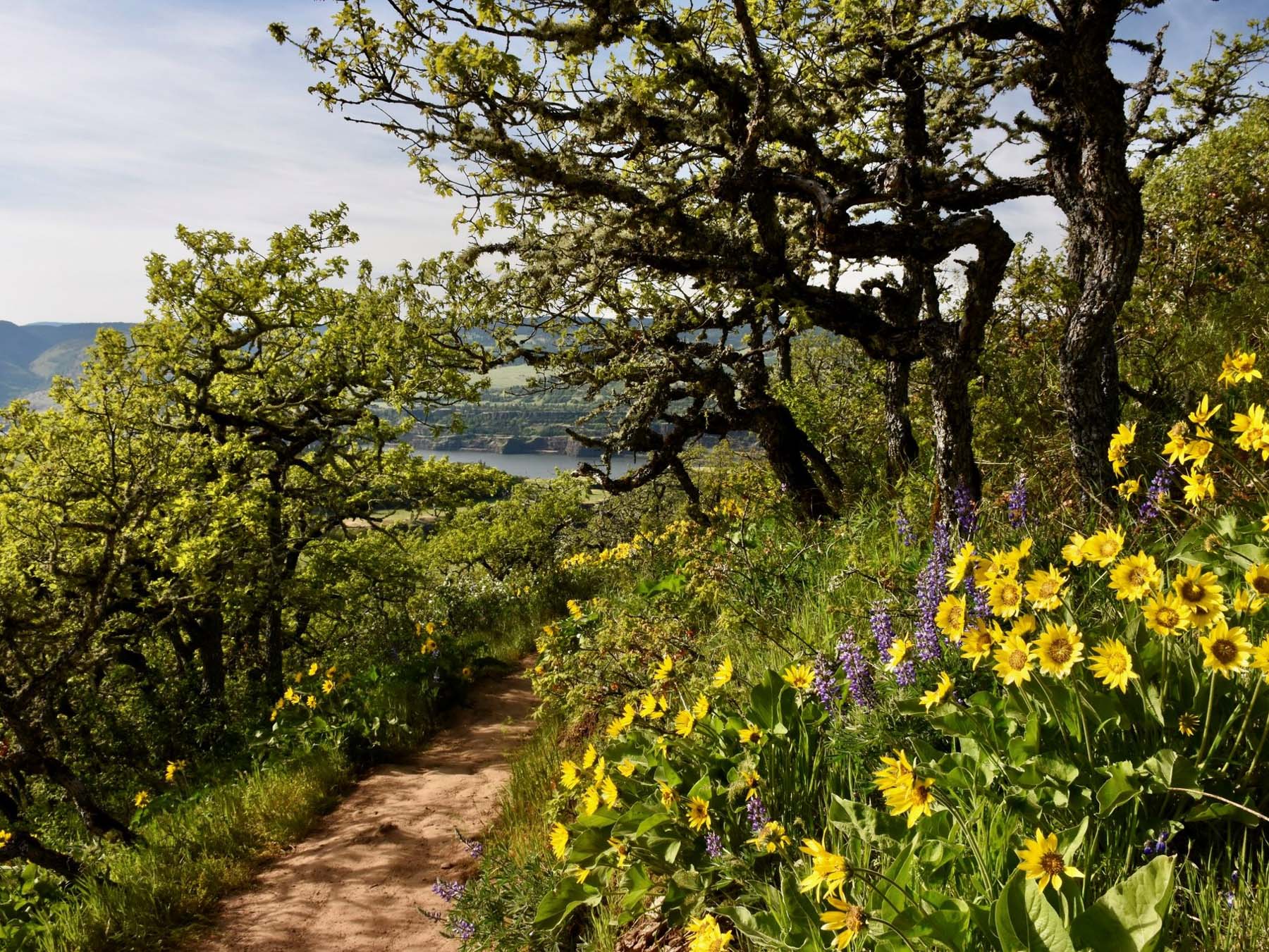
Easy Wildflower Hikes in the Columbia Gorge
Lyle Cherry Orchard
- Miles: 6.5 miles
- Elevation gain: 1,340 feet
- Dogs: Yes, allowed on leash
- Permits: None
Call me biased, but after spending so much time hiking Washington’s side of the Gorge, I feel compelled to start this list of the best hikes in the Columbia River Gorge for wildflowers, with a (personal) favorite: Lyle Cherry Orchard.
(Even if that means we’ll be fighting for a parking spot this weekend!).
Tucked away near the small town of Lyle, this trail is easy to miss if you’re not keeping an eye out for the small gravel turn-out just past the tunnel on the north side.
Named after a (real) cherry orchard and (real) family that lived in a cabin nearby, you won’t find either now. What you’ll find instead is one of the best Columbia Gorge hikes for wildflowers.
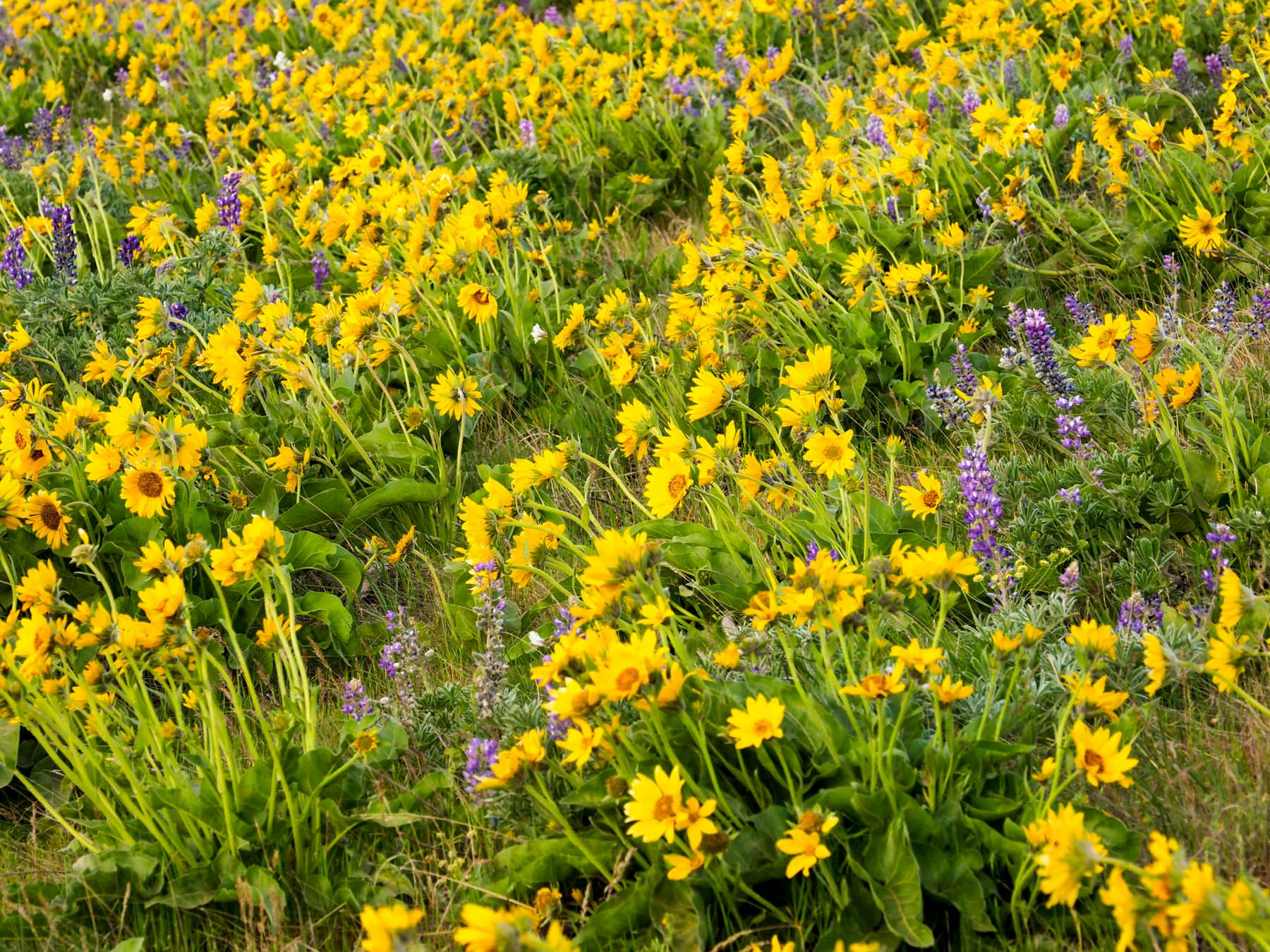
The hike meanders past lupine-lined trails under the twisted branches of old oaks and pines before finally stepping out onto a vast plateau offering breathtaking views.
This Gorge trail exposes hikers to interesting flowers like death camas (what an awful name), yellow-blooming desert parsley, red Indian paintbrush and white cow parsnip.
If you’re wondering who the hell names flowers death camas and cow parsnip — me too. And while I can’t explain away the names, I can say that this is one of the most colorful wildflower hikes in the Columbia Gorge.
Local’s Tip: Plan to hike this trail around sunset. As the sun slips below the horizon, it casts a striking glow, completely transforming the landscape. It’s an otherworldly symphony of light, color and smell.
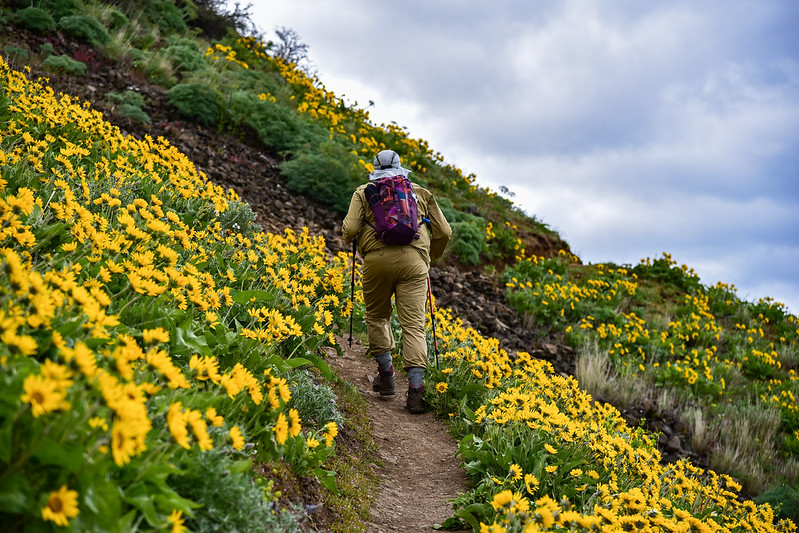
Rowena Crest
- Miles: 2.2 miles
- Elevation gain: 240 feet
- Dogs: Not allowed
- Permits: None
The iconic Rowena Crest could be the poster child for the best wildflower hikes in the Columbia River Gorge. The panoramic views of the Gorge are stunning and bound to impress even the most ardent critic.
On one side, the trail weaves its gentle way past panoramic views of the mouth of the Klickitat River below. Look the opposite direction and you’ll see the breathtaking Cascade range on full display, alongside skirts of and densely forested ridges.
In terms of wildflowers, you’re find the usual suspects: balsamroot, lupine, pale-yellow buckwheat, and purple downingia. These delicate flowers are prolific along the rich expanse of the Rowena Plateau and the trail takes hikers past Rowena Pond where mock orange and yellow water lilies grow.
This trail is excellent for amateur geologists who will find ample evidence of the powerful Missoula floods that long ago shaped this region.
Local’s Tip: There’s a super-popular pull-out along the road that is used by folks trying to get an iconic shot of the horseshoe shape highway below. So heads up if you’ve seen a photo of this spot and wanted to get a snap.

Mosier Plateau
- Miles: 3.5 miles
- Elevation gain: 760 feet
- Dogs: Yes, allowed on leash
- Permits: Nope
Mosier Plateau is found on the Oregon side of the Columbia River Gorge. Beloved by hikers for the steady uphill climb, this hike will get your heart pumping but the endless views are worth the effort.
While the vistas draw nature lovers all year round, the springtime meadows draw the biggest crowds. Field alight with a rainbow of colors from native flowers steal the show, making this one of the best Columbia Gorge wildflower hikes.
Along with the classic balsamroot-lined (I think of these as little sunflowers) trails, Mosier Plateau is notable for its waterfall, which is a popular swimming destination in summertime.
For the wildflower lovers among us, this Columbia Gorge hike features violet bachelor’s buttons (talk about great name!), desert parsley, cluster lilies, and cow vetch (here we go again).
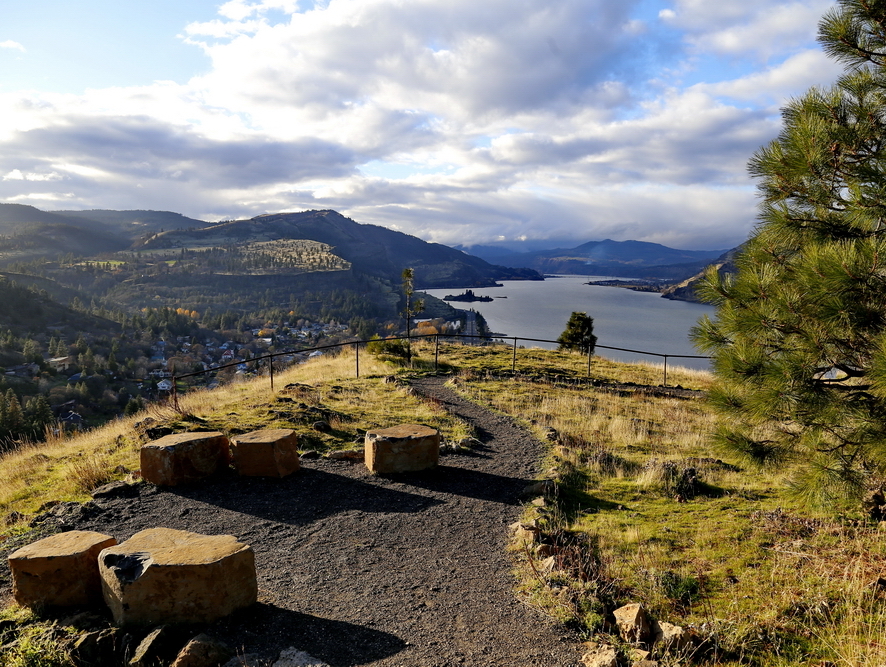
Horsethief Butte
- Miles: 1.7 miles
- Elevation gain: 250 feet
- Dogs: Allowed on leash
- Permits: Discover Pass required XX
Horsethief Butte, a large rock outcropping situated within Columbia Hills State Historical Park, provides further outdoor adventuring opportunities through the rugged landscapes of Washington.
This is a popular destination for rock climbers and hikers of all skill levels who enjoy trails that feel a little more off the beaten track. The Butte is a roughly 15 million year old basalt formation with plenty of nooks and crannies for the curious traveler to explore.
Admire sweeping views of the Columbia River from the broad plateau at the summit while you watch turkey vultures and other raptors riding the thermals.
On your descent keep your eyes and ears peeled for the bubbly song of the Canyon Wren and gutteral caws from the local Ravens as you admire a plethora of wildflowers like penstemon, desert parsley, death camas, and fleabane (wow, trying to top death camas, I see).
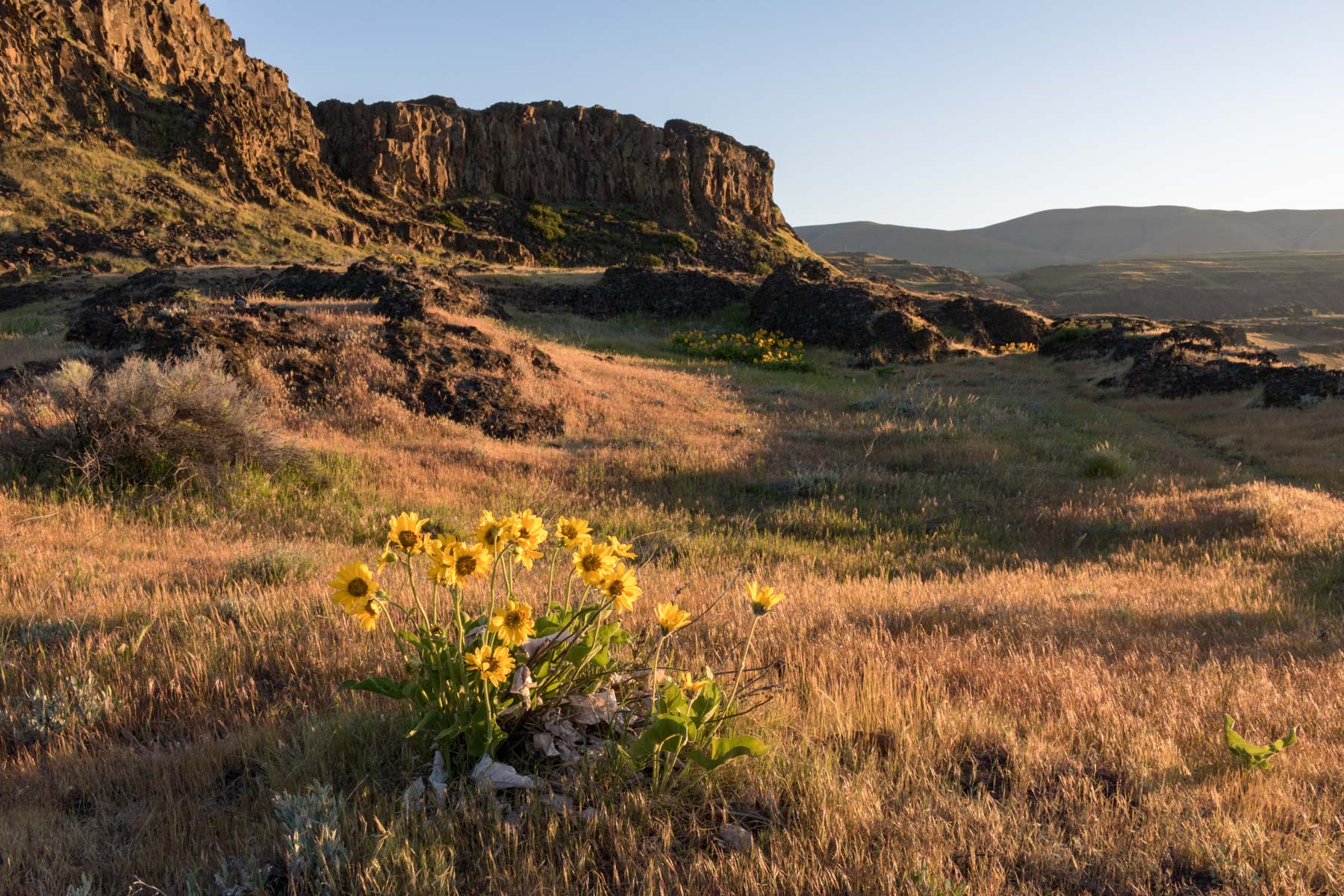
Horsetheif Lake Petroglyphs Trail
- Miles: 1/2 mile
- Elevation gain: 50 feet
- Dogs: Allowed on leash
- Permits: Discover Pass Xx
If negotiating the rocky trail at Horsetheif Butte isn’t in the cards, fret not. There’s plenty of great Columbia Gorge wildflower hikes nearby. Mosey on over to a pleasant jaunt of a trail know as Horsetheif Lake Petroglyphs Trail.
Located within the boundaries of Columbia Hills Historical State Park, the area is best known for breathtaking hillsides that display vibrant shades of yellow and purple from the prolific balsamroot and lupine tucked into every square inch of this 3,300 acre park in spring.
Aside from having an incredible floral display, the park offers another lesser known but incredibly unique opportunity to view actual petroglyphs.
In this way, this trail could provide flower-hunters a convenient opportunity to reset between hikes by learning a little more about the indigenous history of the land.
This trail offers guided tours to witness the famous petroglyphs that were rescued from the banks of the Columbia river after a construction project threatened to submerge them forever. Many of these stones are viewable without a tour as you walk toward the river along the park’s main road.
If you’re interested in a tour, you can find more information/make reservations here.
Catherine Creek (ADA Wildflower Hike in the Gorge)
- Miles: 1.2 miles
- Elevation gain: 90 feet
- Dogs allowed? Yes, on leash.
- Permits: None
Catherine Creek is one of the few ADA Accessible wildflower hikes in the Columbia Gorge. Offering easy access to breathtaking fields of blooms on an paved ADA-accessible path, this hike is a sure bet when you’re short on time or energy.
And no, this isn’t a case of “little effort, little reward.” Quite the contrary, you’ll be graced with panoramic views of the Columbia River and will be privy to fields of blooming buckwheat, bitterroot, camas lilies, and my favorite: swaths of blazing orange California poppies.
Poppies! Who can resist those?
Local’s Tip: The US Forest Service has installed informational signs along this trail inviting curious visitors to take a closer look at the native plants and human history of the region. Take your time and learn about the species before you, those informational signs make this great Columbia Gorge wildflower hike that much better.
Moderate Columbia Gorge Wildflowers Trails
Hood River Mountain Loop
- Miles: 4.4 miles
- Elevation gain: 967 feet
- Dogs: Yes, allowed on leash
- Permits: Nope
A springtime hike that is sure to get your boots muddy, Hood River Mountain is a moderately challenging loop in Hood River, Oregon.
The trek through soggy soil is well worthwhile for the consistent presence of wildflowers that begin to show themselves in early April. A peaceful trail with a few small streams to navigate, so a good pair of boots really is preferred during the wetter months.
Jewel-toned flower species like castelleja, lupine, columbine, and balsamroot steal the show through the end of May. Be prepared and aware of poison oak and ticks (and cow manure, as there are pastures nearby)!
In any case, this hike is worth mentioning for those who need relief from the crowds at the popular Columbia Gorge hiking trails mentioned on this list. Solitude is hard to come by, which is why I recommend this gem.
Angel’s Rest
- Miles: 4.8 miles
- Elevation gain: 1,500 feet
- Dogs: Allowed on leash
- Permits: None
A victim of the 2017 Eagle Creek fire, the beloved Angel’s Rest is still alive and well since being reopened to the public. As you hike toward the summit through Douglas firs and a now-sparse understory of sword fern and vine maple, the charred trunks of the trees are obvious marks of the fire that raged through the area.
This is one of the most popular wildflower trails in the Columbia Gorge. Everyone eager to catch bright white Trillium dramatically blooming against these blackened trunks—a quite dramatic sight.
Toward the craggy peak there are waves of blooming oceanspray and delicate thimbleberry flowers which will eventually give way to the ripe red berries birds fiend for. With the absence of trees post-fire, the view from the top is less obstructed, letting hikers take in a roughly 270 degree view of the Gorge in all its glory.

Cape Horn
- Miles: 7.4 miles
- Elevation gain: 1,230 feet
- Dogs: Allowed on leash
- Permits: None
For a half-day wildflower hike in the Columbia River Gorge, Cape Horn is your best bet. While many travelers along Washington’s SR-14 have likely passed this inconspicuous trail without giving it a second glance, you’d be remiss to follow suit.
Pulling over is well worth an hour or two for the unobstructed views of the river alone. Along the Cape Horn trail you’ll discover a wide variety of interesting natural wonders including a small waterfall, plenty of fungi, and an array of wildflowers and butterflies in spring.
Fun fact: there is a small population of Pika that live in this area of the Gorge—a rare phenomenon, as these small rabbit-like mammals typically live in higher alpine habitats. Keep alert for their squeaking calls as you cross the talus slopes where the red fern grows. Just kidding, this is where the flowers grow, but the opportunity was too delicious to pass up.
Note: The lower part of the trail is closed from February 1st through July 15th each year to protect nesting Peregrine falcons.
Drift Creek Falls
- Miles: 3.7 miles
- Elevation gain: 540 feet
- Dogs: Allowed on leash
- Permits: Northwest Forest Pass
Have you ever thought to yourself what it would be like to hike 2,000 miles to prove something to yourself (or an ex?). If so, you’re one of the wild ones, aren’t you? The Pacific Crest Trail (PCT) was thrust into the limelight after this cult-favorite book came out in 2012.
Well, if you’re not ready to hike for 2,000 miles on end, may I suggest a milder alternative that follows 4 miles along the trail instead? Pop on the trail and ponder over whatever eats at you while meandering towards Drift Creek Falls.
The bold blue and white badge signifying the PCT marks the trailhead right at the base of Bridge of the Gods in Cascade Locks, Oregon.
While not necessarily a place folks flock to see vast stretches of seasonal wildflowers, this damp slice of classic Pacific Northwest forest is a straightforward opportunity to see many of the most common floral species this region has to offer.
Miner’s lettuce, trillium, and salmonberry dominate the understory with the occasional yet exciting shock of red-orange tiger lilies with their heavy heads peek through lush sword fern and salal (part of the heather family of plants).
The dramatic lava rock formations you’ll easily traverse along the trail make way for the grand finale: a show-stopping amphitheater of basalt from which Drift Creek Falls plunges a little over 60 feet.
Slow down time and enjoy a picnic before heading back — this time uphill on a slight incline, –recrossing small creeks and footbridges and return to your car 1,996 miles shy of completing the PCT (maybe next time!).
Dalles Mountain Ranch
- Miles: 6.9 (variable depending on starting point)
- Elevation gain: 1,060 feet
- Dogs: Allowed on leash
- Permits: Discover Pass
Dalles Mountain Ranch is one of the most popular wildflower trails in the Columbia River Gorge. This scenic hike takes you across broad plateaus filled to the brim with grasses, flowers, and crystal clear views of Mount Hood on clear days.
Bright buttery petals of balsamroot really show off here, dominating the slopes as far as the eye can see. Among the blooms look around for evidence of the old ranch that once was active here: barns, homesteads, and old farm equipment dot the property and are ideal subjects for pastoral photography, particularly during the golden hour.
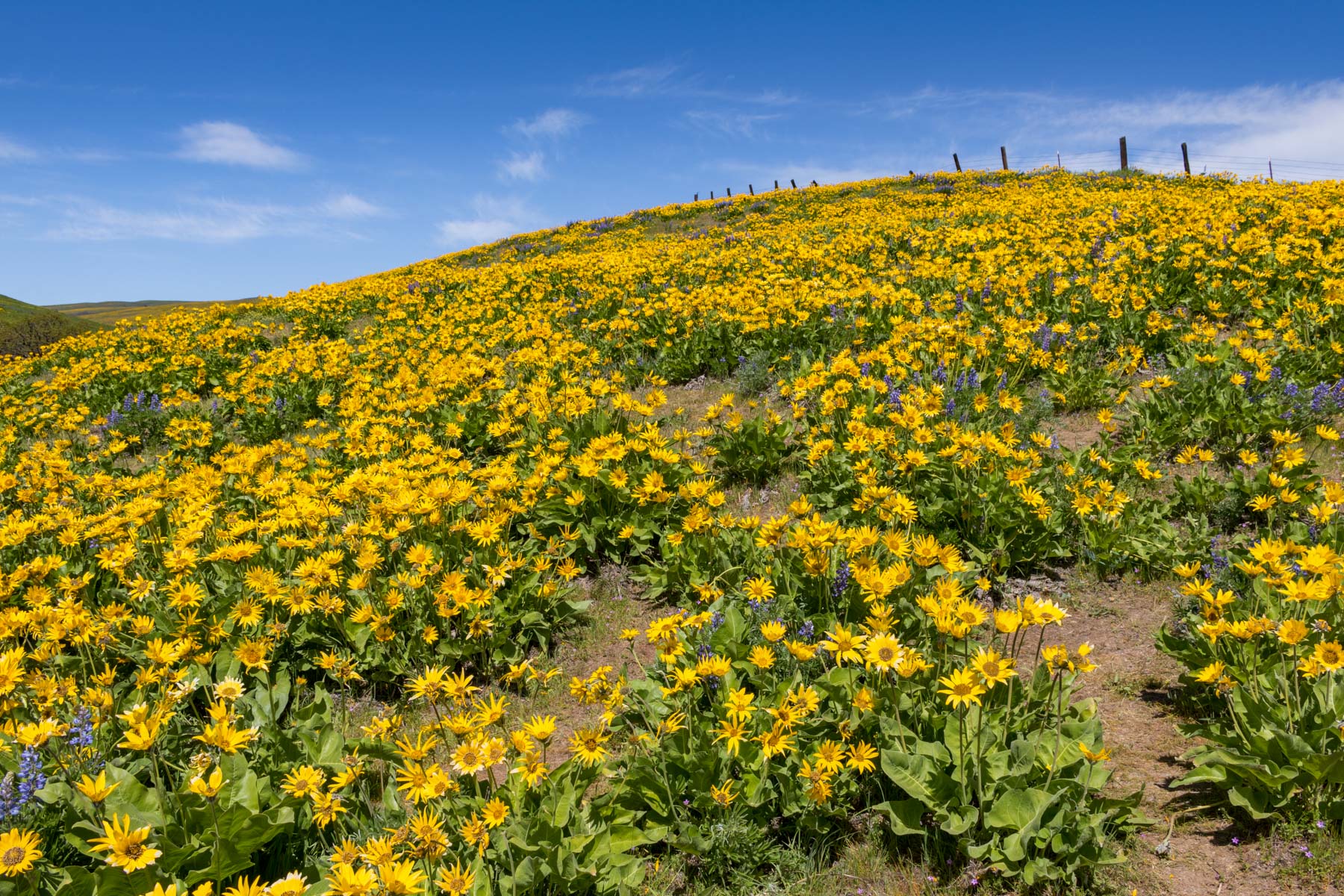
The Labyrinth/Coyote Wall
- Miles: 7.8 miles
- Elevation gain: 1,175 feet
- Dogs: Allowed on leash
- Permits: Nope
Located on the Washington side, the Labryinth is a maze of trails that wind through lava rock, seasonal waterfalls and small canyons. The area is ripe for exploration and offers great trails for those that want to exchange the lush forest for grassy plains and open skies.
Dominating the arid landscape, Coyote Wall is a beloved staple with mountain bikers. Seriously, they’ve been biking these trails for as long as your mother has been telling you to make your bed (forever).
But, as with most great things, hikers have caught on (damn us!) to the enjoyable climb and rewarding views from the summit of this monolithic wonder.
The rest, as they say, is history. Just kidding, we’re just getting started.
The Labyrinth/Coyote Wall trail is one of the best hikes in the Columbia Gorge for wildflowers. Meander up the scenic trail between gnarled oaks, Ponderosa pine, maples and plenty seasonal wildflowers (like balsamroot & and yellowbells).
This area is home to the earliest wildflowers in the Columbia Gorge! The colorful flowers start popping up in late March and last until May. Making this a great introduction to the wonderful wildflower hiking trails in the Gorge.
Local’s Tip: If you’re bringing your sweet pup, make sure they’re kept on a leash throughout the duration of the hike. Stay on the trail, as rattlesnakes and ticks are active from late April through October.
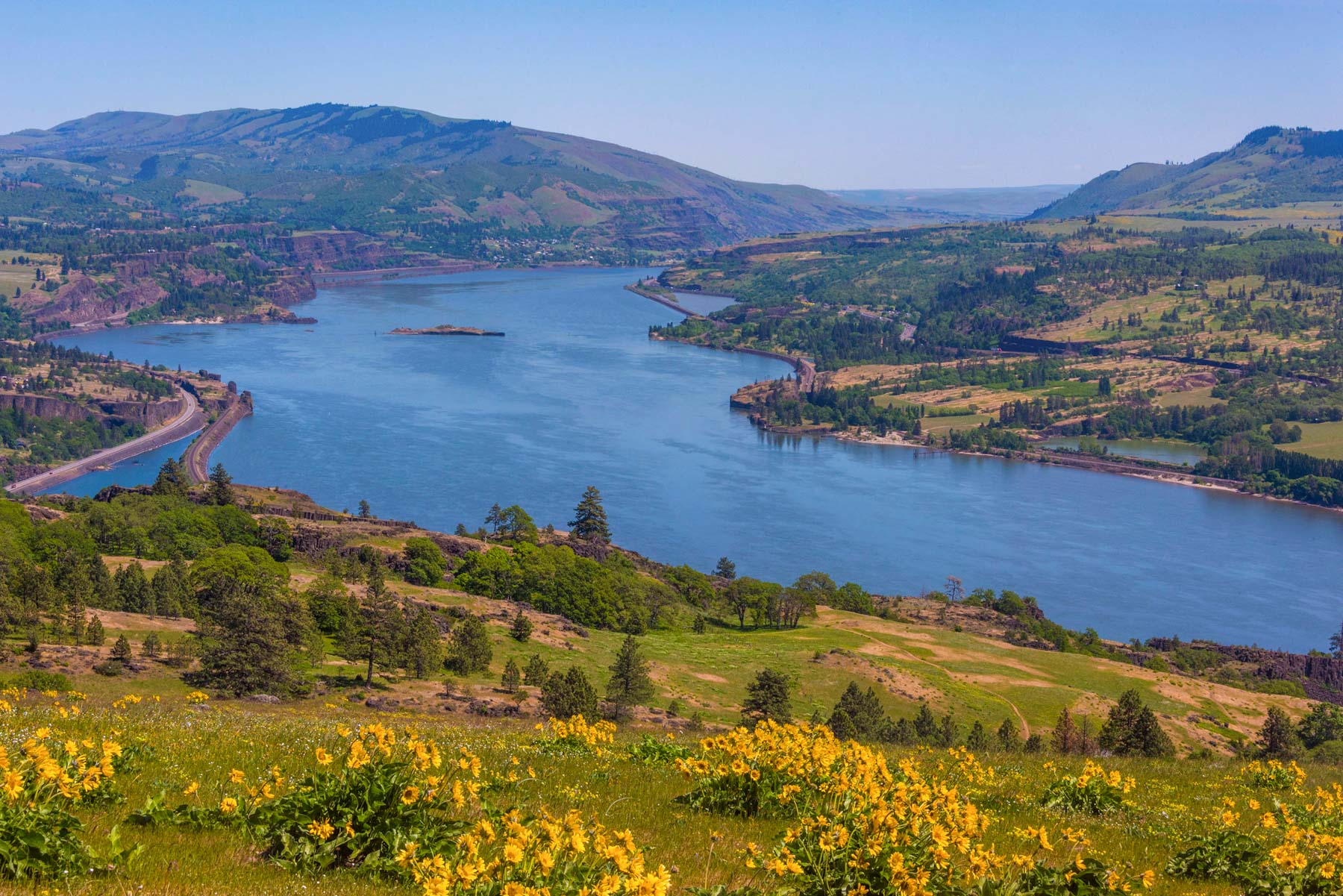
Challenging Columbia Gorge Wildflower Hikes
Dog Mountain
- Miles: 6.9 miles
- Elevation gain: 2,800 feet
- Dogs: Allowed on leash
- Permits: Required on weekends (reserve here) & NW Forest Pass or $5 fee at Trailhead.
A steep hike offering two trail options: “Less difficult” or “More difficult”, Dog Mountain isn’t for those seeking a casual stroll.
The upper reaches of this trail allows for classic views of the Columbia River Gorge as well as a multitude of wildflowers growing on the sun-filled slopes during peak season.
Perhaps more abundant than the blooms are the visitors who arrive in droves each season to challenge themselves to the climb and snap social media-worthy pictures of the flowers each season.
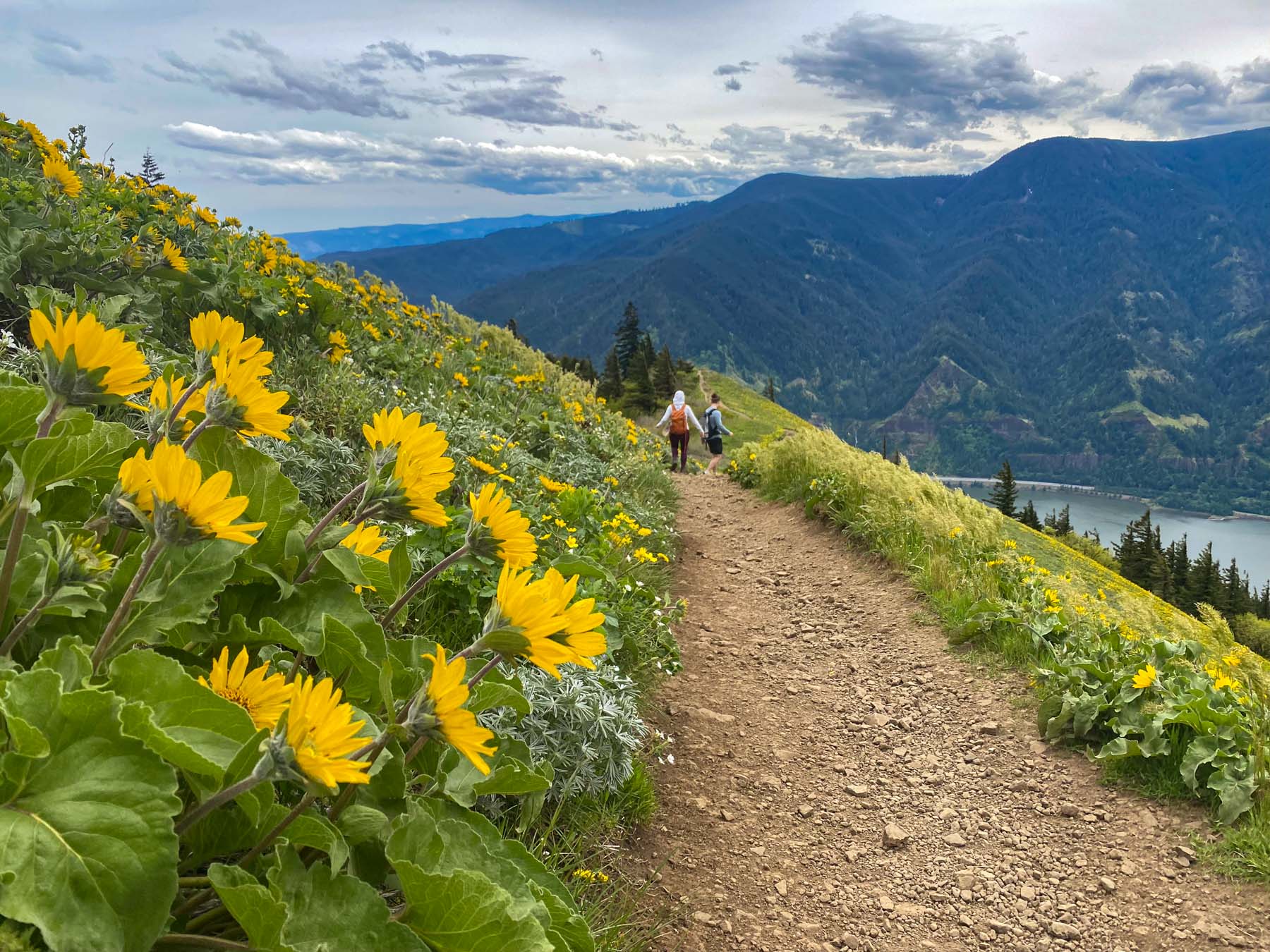
Dog Mountain is certainly loved by many, and often considered one of the best wildflower hikes in the Columbia Gorge. Even without spring blooms, the views from the summit are reason alone to visit, but if you plan to trek out here for the flowers, be prepared for the experience that comes with crowds.
A narrow single-track trail will often be heavily trafficked, and plenty of water and snacks along with a pair of sturdy non-slip shoes will prepare you for the best possible wildflower viewing experience. This wildflower experience in the Columbia Gorge is worthwhile, even with the crowds.
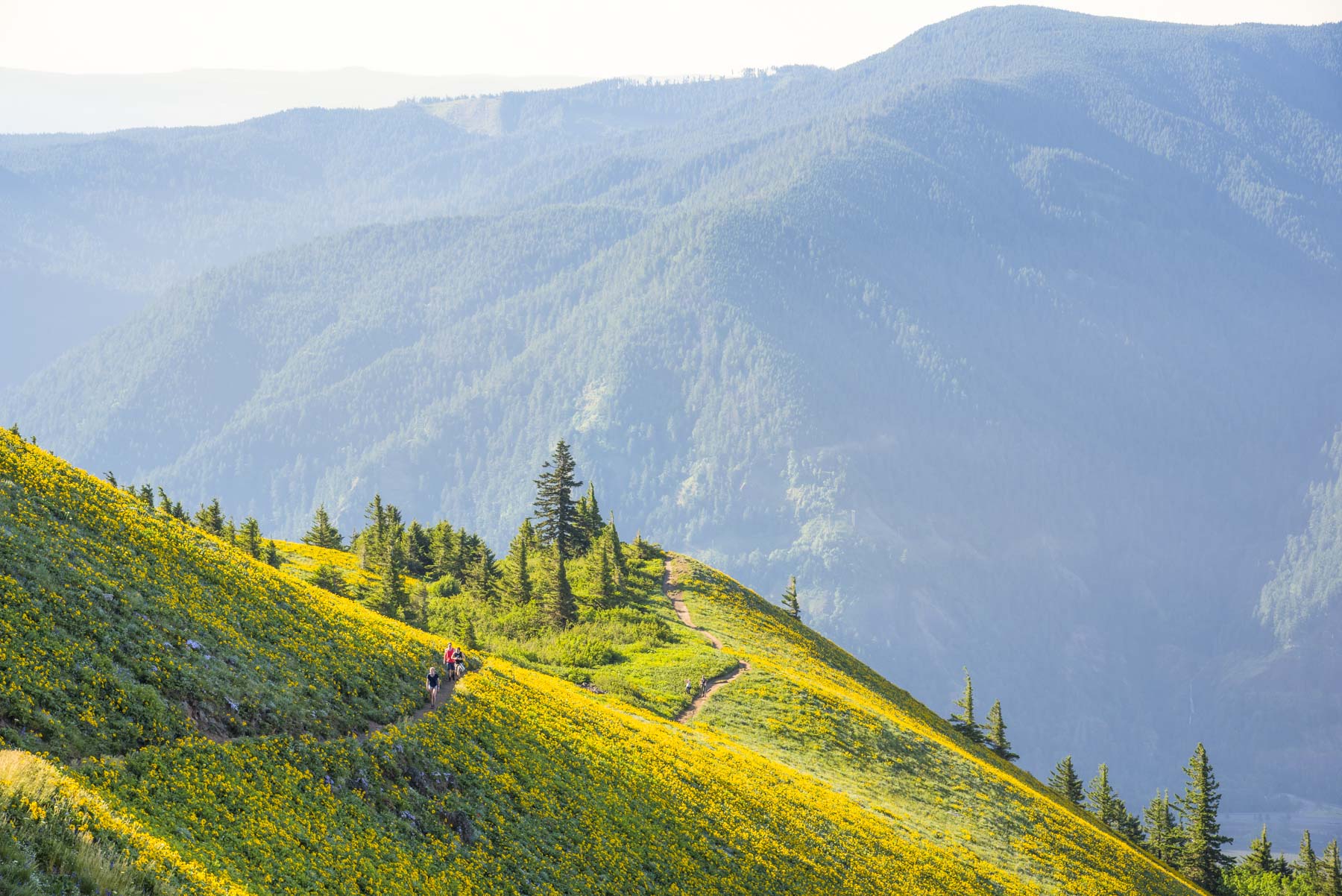
Table Mountain
- Mileage: 15.5 miles
- Elevation: 3,400 feet
- Parking Pass Required?: Yes (NW Forest Pass)
- Dogs Allowed? Yes, on leash
Flat-topped Table Mountain (which can appear more pyramidal depending on the angle) stands among the most commanding peaks of all the trails on the Washington side of the Columbia River.
This long, arduous hike—one of the most challenging Columbia Gorge hikes, mind you—attains the 3,417-foot summit from the Bonneville Trailhead. The trail uses portions of the Tamanous, Pacific Crest, and West Table Mountain trails.
Soaring Table Mountain serves up stirring views of the Columbia Gorge and the Cascade crest. But the huge, intimidating cliffs of the mountain’s south face are just as impressive. So is the bird’s-eye view of the Bridge of the Gods.
These inedible sights are unforgettable and made the strenuous effort worthwhile. So yeah, Table Mountain is one of the most challenging hikes, but also one of the best hikes in the Columbia Gorge for wildflowers.
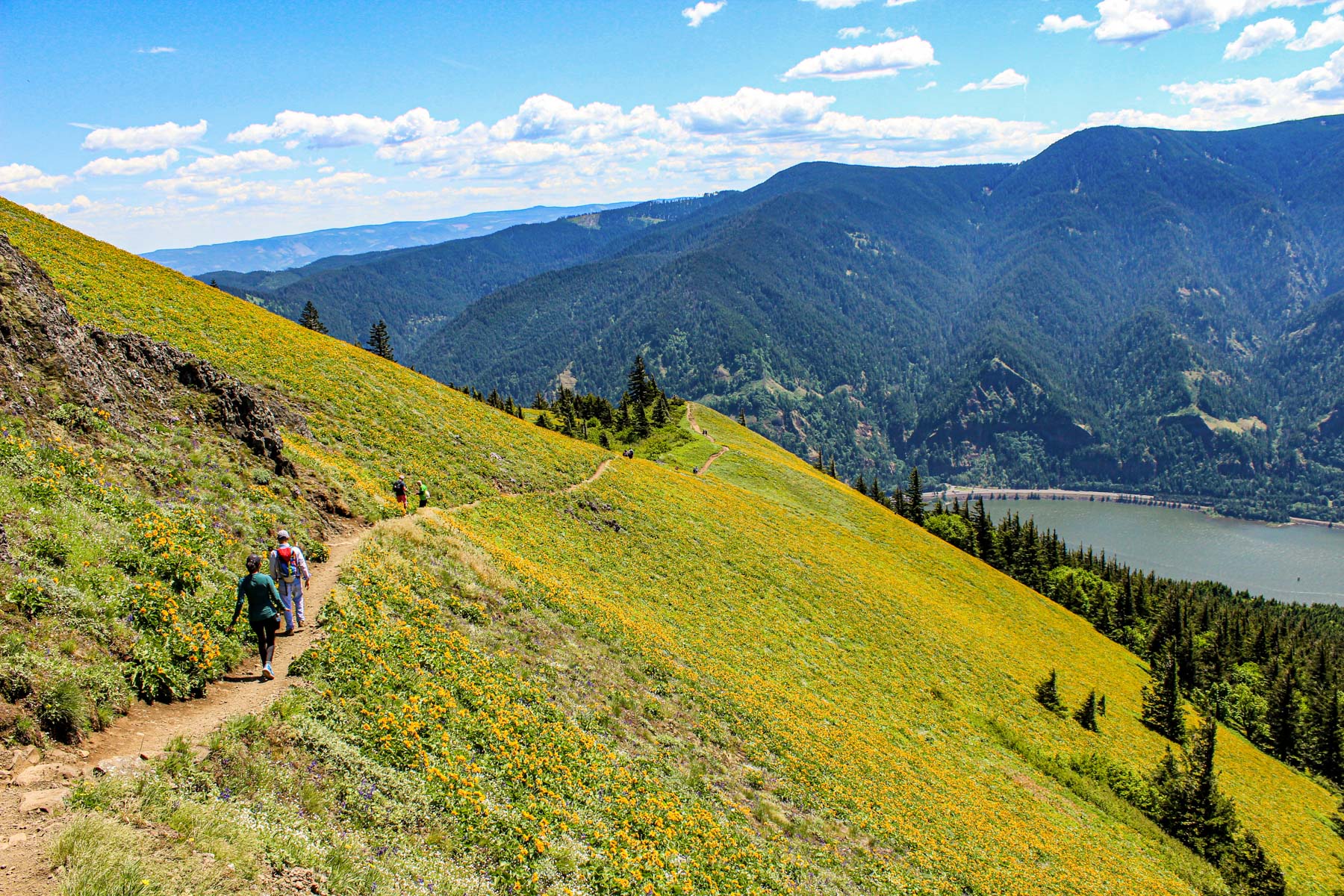
Hamilton Mountain
- Miles: 7.5 miles
- Elevation: 2,200 feet
- Dogs: Allowed on leash
- Permits/Passes: Washington Discover Pass or $5 fee at the trailhead
Old Hammy (alright, I’m probably the only one who calls it that) is a classic trail that takes you past a unique waterfall, a footbridge that spans a picturesque creek dotted with moss-cradled boulders.
A hit with nature nuts, portions of the trail give brief opportunities to test your parkour skills as you scramble over roots onto broad basalt outcroppings with expansive views toward the misty foothills of Oregon.
Loved by avid hikers for its moderate incline and rewarding views, Hamilton Mountain is a year-round gem, but the spring is when it really shines.
In the spring there’s a delightful mix of seasonal wildflowers (Columbine, False-Lily-of-the-Valley, Fairy Slippers) that creep up in the underbrush of the forest, making this one of the best wildflower hikes in the Columbia River Gorge.
Best Hikes in the Columbia Gorge for Wildflowers (Post Summary)
The bright and cheerful pops of color from these native flora are an annual invitation to shake the winter blues and make time to play outside. To explore the seemingly endless offerings of wildflower hiking trails in the Columbia River Gorge.
In sum, here’s a roundup of the best wildflower hikes in the Columbia Gorge.
Easy Wildflower Hikes in the Columbia Gorge
- Lyle Cherry Orchard
- Rowena Crest
- Mosier Plateau
- Horsethief Butte
- Horsetheif Lake Petroglyphs Trail
- Catherine Creek (ADA Wildflower Hike in the Gorge)
Moderate Hikes in the Columbia Gorge for wildflowers
- Hood River Mountain Loop
- Angel’s Rest
- Cape Horn
- Drift Creek Falls
- Dalles Mountain Ranch
- The Labyrinth/Coyote Wall
Challenging wildflower hikes in the Gorge
- Dog Mountain
- Table Mountain
- Hamilton Mountain
Local’s Tip: Check out the helpful NW Wildflowers Map where you can monitor the current blooms at various sites around the state where wildflowers are abundant.
Map of the Best Columbia Gorge Wildflower Hiking Trails
Washington Side Columbia Gorge wildflower hikes, best wildflower hikes Columbia Gorge Washington side
Cheers!

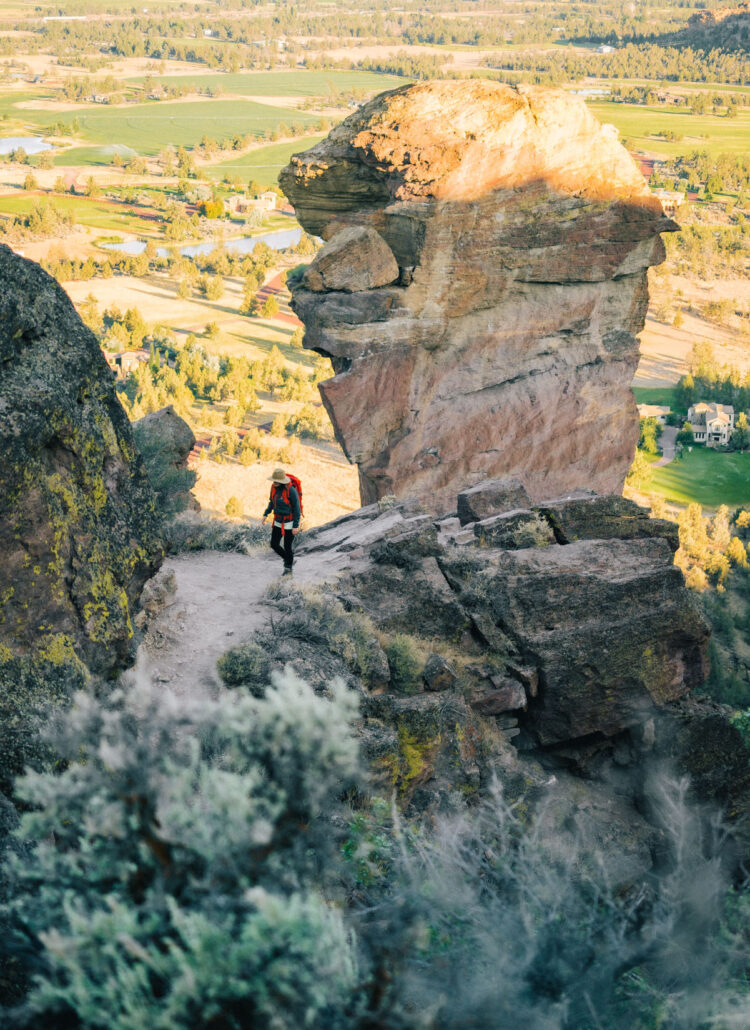



What do you think?